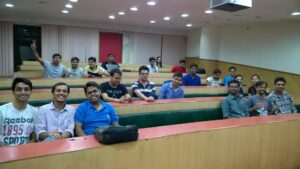

Introduction
Indian Institute of Technology Delhi - Introduction
Naief Khatri
The College of Engineering Delhi was established in 1961 and declared as an institute of national importance in 1963 under the institutes of technology amendment act. In the same year the institute got its new name as Indian Institute of Technology Delhi and given the status of “Deemed University” with power to decide its own academic policy, to conduct its own examinations, and to award its own degrees. The IIT Delhi is administered by IIT Council, an apex body established by the Government of India. The Minister of Human Resource Development – Government of India is the chairman of the council.
Location
The Indian Institute of Technology Delhi (IITD) is situated at Hauz Khas in South Delhi. Hauz Khas is a landmark place in the colorful and chequered history of Delhi. The institute is bounded by the Sri Aurobindo Marg on the east, the Jawaharlal Nehru University Complex on the west, the National Council of Educational Research and Training on the south, and the New Ring Road on the north. The IIT Delhi campus is flanked by Qutab Minar and Hauz Khas monuments.

Students at IIT Delhi Classroom. Picture Courtesy: http://www.campusoption.com
The Indian Institute of Technology Delhi (IITD) acquires nearly 320 acres of land area divided into four functional zones-
- Residential zone for students;
- Residential zone for the faculty and staff;
- Academic zone for academic buildings and workshops;
- Cultural-cum-social and recreational zone for students.
Objectives of IIT Delhi
- Offering instruction in engineering and applied sciences at a level comparable to the very best in the world.
- Providing best facilities for postgraduate studies and research.
- Providing leadership in curriculum planning and laboratory development.
- Developing programmes for faculty development both for its own staff and for teachers of other engineering institutions.
- Developing close collaboration with industry through exchange of personnel and undertaking consultancy projects.
- Developing strong collaboration links with other academic and research institutions in the country and abroad.
- Anticipating the technological needs for India and to plan and prepare to cater to men.
- Developing continuing education programmes.
- Preparing instructional resource material in the conventional as well as the audiovisual me video and the computer based modes.
- Catering to the development of a culture for maintenance and conservation.
Latest News
People Reading Now

CBSE Compartment Result 2023 OUT: Click For Direct Link



CSAB 2023: Special Round Registration Begins Today


